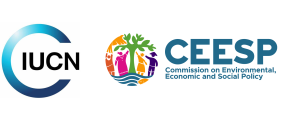Partners
The inception of the ‘Whakatane Mechanism’ was the result of a high-level meeting, convened at the initiative of indigenous representatives and the Forest Peoples Programme, in order to explore options to support further implementation of IUCN Resolutions related to indigenous peoples.
The meeting held at the 'Sharing Power’ conference in Whakatane, New Zealand in January 2011 was attended by Indigenous Peoples representatives, the chairs of three IUCN Commissions (the Commission on Environmental, Economic and Social Policy [CEESP], the World Commission on Protected Areas [WCPA] and the Species Survival Commission [SSC]), the CEESP/WCPA Theme on Indigenous Peoples, Local Communities, Equity and Protected Areas (TILCEPA) and the CEESP Theme on Governance, Equity and Rights (TGER), staff of IUCN Headquarters and Oceania Regional Office, and IUCN Members Conservation International (CI) and the Forest Peoples Programme (FPP).
Following the meeting, IUCN CEESP and FPP initiated the ‘Whakatane Mechanism’ through two pilot assessments which were implemented in Kenya and in Thailand. Based on the experience of the two pilot Assessments, a further Whakatane process was held in DRC, after which a number of institutions took part in devising a more precise plan for the implementation of the Whakatane Mechanism: this included IUCN members, the IUCN Global Protected Areas Programme, the World Heritage Programme, Regional Programmes and IUCN Commissions especially WCPA and CEESP.
The Whakatane Mechanism founding members, IUCN CEESP and FPP, have been joined by the Chepkitale Indigenous Peoples Development Programme (CIPDP), which led the assessment done in Kenya. Membership remains open to organisations dedicated to advancing the resolution of conflict in protected and conserved areas.
For more information or inquiries, please email whakatane@forestpeoples.org


